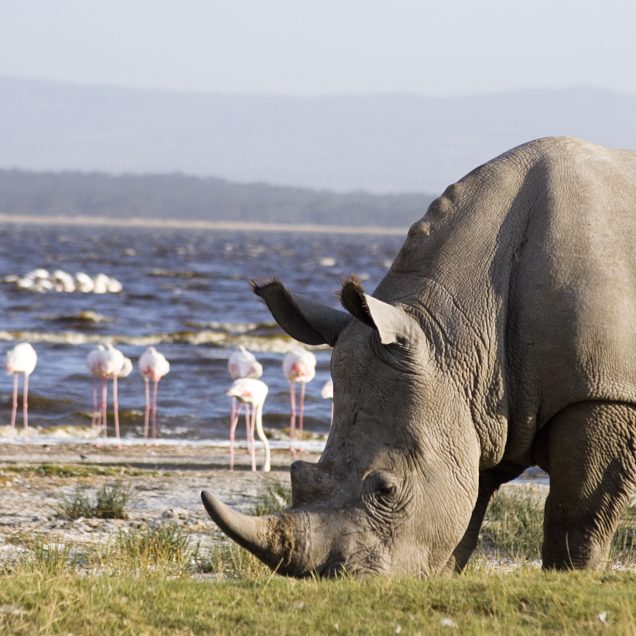Lake Nakuru National Park is a renowned national park in Kenya, known for its spectacular birdlife, including vast flocks of flamingos, and a variety of wildlife. Here are some key features and information about Lake Nakuru National Park:
- Location:
- Lake Nakuru National Park is located in the Rift Valley region of Kenya, approximately 170 kilometers northwest of Nairobi. The park surrounds Lake Nakuru, one of the Rift Valley’s alkaline lakes.
- Landscape:
- The park features diverse landscapes, including the lake itself, grasslands, acacia woodlands, and rocky escarpments. The lake’s alkaline waters provide a suitable habitat for a variety of bird species.
- Flamingos:
- Lake Nakuru is famous for the large population of flamingos that inhabit its shores. The flamingos feed on the algae in the lake, creating a stunning pink hue along the shoreline. The park is one of the best places in Africa to observe these birds.
- Rhinos:
- The park is a sanctuary for both black and white rhinoceroses. Conservation efforts have been successful in protecting and increasing the rhino population in the park.
- Wildlife:
- Lake Nakuru National Park is home to a wide range of wildlife, including lions, leopards, buffaloes, giraffes, zebras, waterbucks, and various antelope species.
- Birdlife:
- Apart from flamingos, the park is a haven for birdwatchers with over 450 bird species recorded. Pelicans, cormorants, herons, and birds of prey are among the many species that can be spotted.
- Baboon Cliff:
- Baboon Cliff is a popular viewpoint in the park that offers panoramic views of the lake and surrounding landscapes. It’s an excellent spot for photography.
- Makalia Falls:
- The park is home to Makalia Falls, a picturesque waterfall that adds to the scenic beauty of the area.
- Accommodations:
- There are accommodation options within and around the park, ranging from luxury lodges to tented camps, providing visitors with a comfortable stay while experiencing the wildlife and natural beauty.
- Conservation:
- Conservation efforts in the park focus on protecting its diverse ecosystems, including the rhino conservation program, which has been successful in maintaining and increasing rhino populations.
- Accessibility:
- The park is easily accessible by road from Nairobi, making it a popular destination for both day trips and longer safaris.
Lake Nakuru National Park is a UNESCO World Heritage Site and a Ramsar Convention site, highlighting its international significance for both its biodiversity and the ecological importance of Lake Nakuru. It is a must-visit destination for wildlife enthusiasts and birdwatchers in Kenya.






